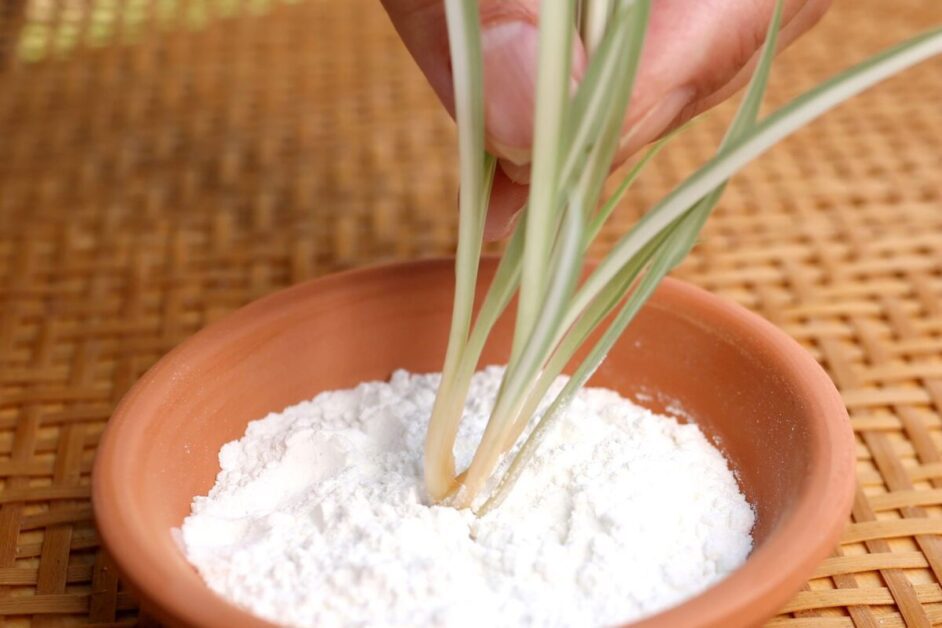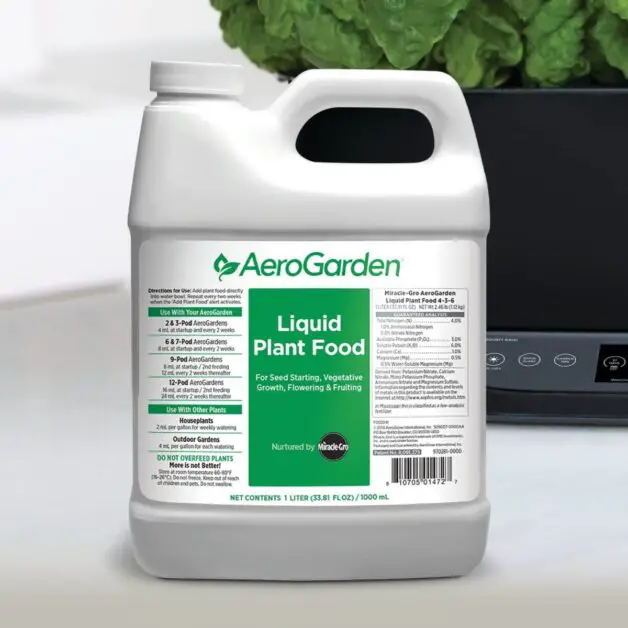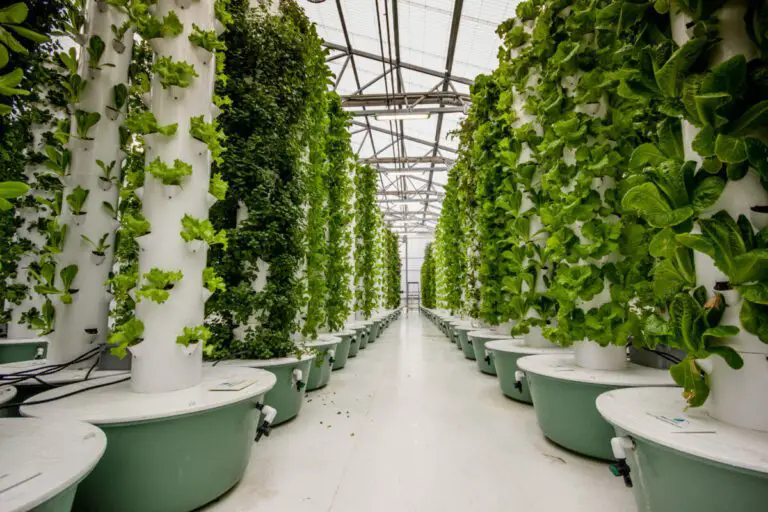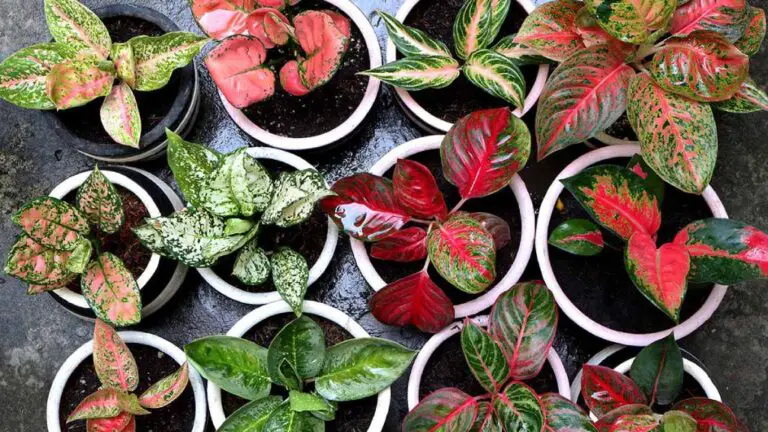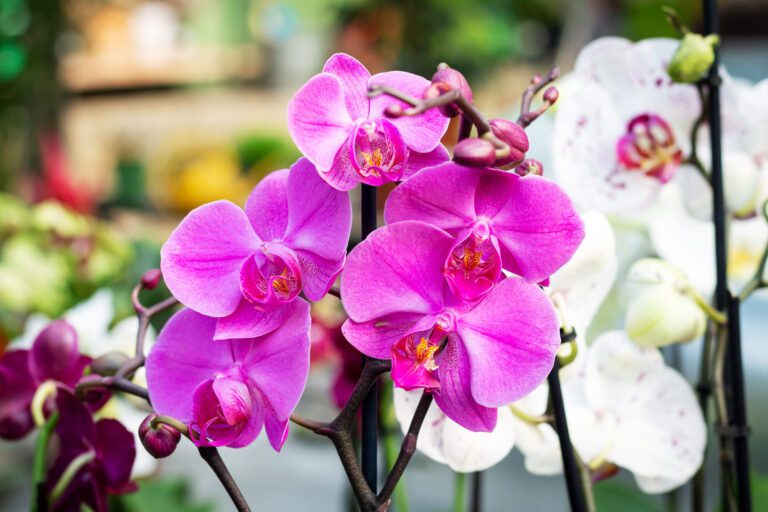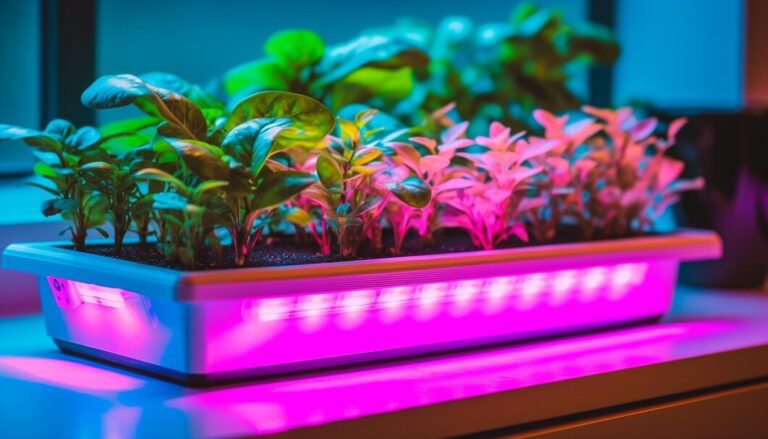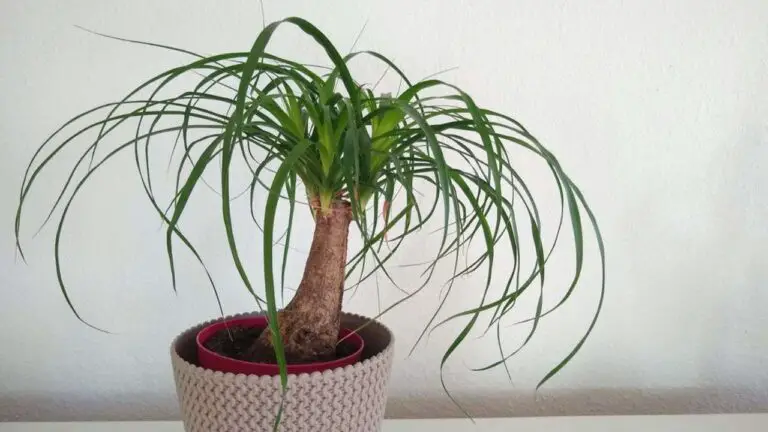How to Use Rooting Hormones on Cuttings: A Guide to Boosting Your Plant Propagation Success with These Products
Did you know that using rooting hormones on plant cuttings can significantly increase your chances of successful propagation? It’s true! Rooting hormones contain synthetic or natural substances that promote root growth, making it easier to grow new plants from cuttings.
But how do you use rooting hormones effectively? In this guide, we’ll show you how to use these products to boost your plant propagation success. We’ll cover everything from choosing the right rooting hormone for your plants to applying it correctly to your cuttings.
Whether you’re a seasoned gardener or just starting out, this guide will provide you with the knowledge and skills you need to use rooting hormones like a pro. By following our tips and tricks, you’ll be able to grow healthy, thriving plants from cuttings in no time.
So, if you’re ready to take your plant propagation game to the next level, read on! Our expert team of horticulturists has put together a comprehensive guide that is both informative and easy to follow. Trust us, your plants will thank you!
Table of Contents
Understanding Plant Propagation: The Basics Every Gardener Should Know
Propagation is an essential skill for every gardener to master, as it allows for the expansion of plant populations and the creation of new plant specimens. By understanding the basics of plant propagation, gardeners can unlock the ability to reproduce their favorite plants and experiment with new varieties.
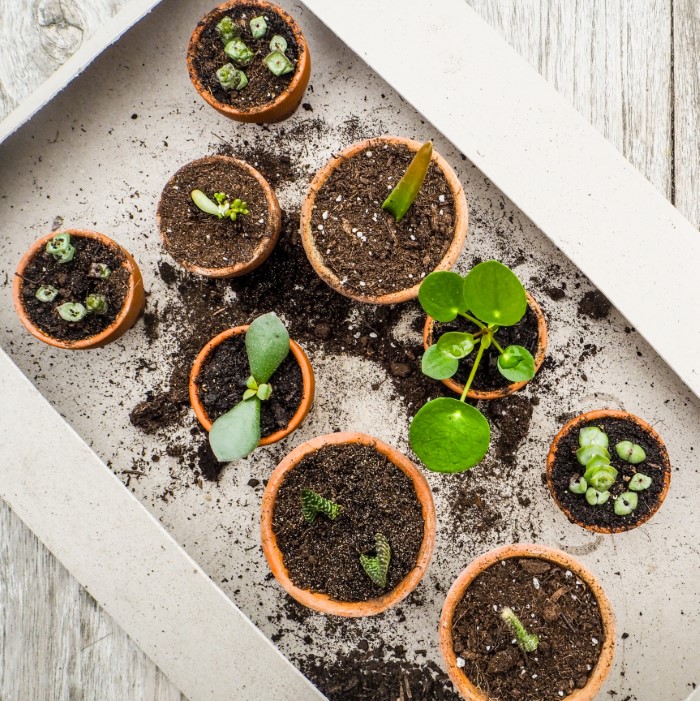
The process of plant propagation involves creating new plants from existing ones, either sexually or asexually.
- Sexual Propagation:
- Method: Involves using seeds produced by flowers or cones.
- Advantages:
- Genetic Diversity: Seeds result from the combination of genetic material from two parent plants, leading to diverse offspring.
- Adaptability: New plants may adapt better to local conditions.
- Species Propagation: Ideal for species that produce abundant seeds.
- Suitability:
- Annuals and Perennials: Commonly used for annuals and perennials.
- Woody Plants: Suitable for many trees and shrubs.
- Variety Creation: Useful for creating new varieties.
- Examples: Sowing vegetable seeds, growing fruit trees from seed.
- Asexual Propagation:
- Methods:
- Cuttings: Taking stem or leaf cuttings and rooting them.
- Division: Separating clumps of bulbs, rhizomes, or tubers.
- Layering: Burying stems to encourage root growth.
- Grafting: Joining parts of different plants to create a single plant.
- Advantages:
- Clonal Reproduction: Offspring are genetically identical to the parent plant.
- Preserving Traits: Allows propagation of specific traits (e.g., flower color, fruit quality).
- Quick Results: Faster growth compared to seeds.
- Suitability:
- Perennials: Ideal for perennial plants.
- Exact Replication: Used when maintaining specific cultivars.
- Difficult-to-Seed Plants: Suitable for plants with low seed viability.
- Examples: Rooting pothos cuttings, dividing snake plant clumps.
- Methods:
Remember, successful propagation depends on factors like timing, environmental conditions, and proper care. Choose the method that aligns with your gardening goals and the specific plant species you’re working with! 🌱🌿
Choosing the Right Rooting Hormone: Factors to Consider
Choosing the right rooting hormone is essential for successful plant propagation. With a wide range of options available in the market, it’s important to consider several factors to ensure you make the best choice for your needs.
:max_bytes(150000):strip_icc()/potting-succulents-getty-539273801-36f65fc854054e278e883b801ebab14e.jpg)
Identify Plant Type and Rooting Requirements:
- Determine the type of plants you are propagating and research its specific rooting needs.
- Different plants may respond better to certain hormones, such as indole-3-butyric acid (IBA) for softwood cuttings or naphthaleneacetic acid (NAA) for hardwood cuttings.
Select Appropriate Hormone Concentration:
- Consider the concentration of the rooting hormone, ranging from low to high.
- Higher concentrations may promote faster root development but could potentially damage the cutting.
- Lower concentrations are suitable for delicate or sensitive plants, balancing root growth with cutting health.
Strike a Balance:
- Choose a concentration that matches the specific requirements of your plant, balancing root development with cutting health.
- Ensure the selected concentration meets the needs of your plant species and propagation method.
Evaluate Formulation and Application Method:
- Assess the formulation of the rooting hormone, such as liquid, gel, or powder.
- Select the formulation that is easiest to apply and most effective for your chosen propagation method, ensuring optimal results.
The following table explains the different rooting hormone:
| Factor | Options | Quantitative Impact |
|---|---|---|
| 1. Active Ingredient Concentration | – 0.1% IBA (Indole-3-butyric acid). | – Provides a higher success rate for root development. |
| – 0.3% IAA (Indole-3-acetic acid). | – Higher concentrations may promote faster root initiation. | |
| – 0.2% NAA (1-Naphthaleneacetic acid). | – Concentrations should align with specific plant species. | |
| 2. Application Form | – Gel, liquid, or powder formulations. | – Gel formulations offer better adherence to cutting surfaces. |
| – Gel-based for increased contact and adhesion. | – Liquid formulations may be preferred for uniform coverage. | |
| – Powder for easy and precise application. | – Powder formulations may require accurate dosing. | |
| 3. Plant Species Suitability | – Formulas designed for broad-spectrum use. | – Tailored formulations for specific plant types may exist. |
| – Specialized formulations for woody plants. | – Ensure compatibility with the target plant species. | |
| 4. Rooting Time Acceleration | – Hormones with rapid root initiation properties. | – Accelerates root development within a specific timeframe. |
| – Moderate-acting hormones for balanced growth. | – Allows for a more controlled and gradual rooting process. | |
| 5. Cost-Effectiveness | – Price per unit (gel, liquid, or powder). | – Evaluate cost versus concentration and application form. |
| – Volume required for a specific application. | – Consider long-term costs and overall effectiveness. |
By taking into account the type of plant and the concentration and formulation of the rooting hormone, you can make an informed decision when choosing the right rooting hormone for your propagation needs. Ensuring compatibility between the hormone and plant, as well as finding the optimal concentration, will set the stage for successful and efficient plant propagation.
The IBA Clone Rooting Hormone Gel has been a game-changer in my propagation efforts. Its gel formulation makes application a breeze, ensuring thorough coverage and quick absorption for cuttings. I was impressed by the rapid root development it facilitated, significantly reducing the time needed for cuttings to establish. While I appreciated its effectiveness, I remained mindful of its chemical nature and potential messiness during application. Overall, it’s a valuable tool for any gardener looking to propagate plants with ease and success.
- Effective Rooting: Stimulates root growth in cuttings, promoting successful propagation of plants.
- Gel Formulation: Easy-to-use gel form provides excellent adhesion to cuttings, ensuring optimal coverage and absorption.
- Quick Results: Facilitates rapid root development, reducing the time needed for cuttings to establish in soil or other growing media.
- Versatile: Suitable for use with a wide range of plant species, including ornamentals, vegetables, and herbs.
- Long Shelf Life: Gel formulation maintains stability and efficacy over time, allowing for extended storage without degradation.
- Affordable: Offers good value for money compared to other rooting hormone products on the market.
- Potential Mess: Gel formulation may be messy to apply, requiring careful handling to avoid spills and stains.
- Limited Quantity: The container size may be small for growers with extensive propagation needs, requiring frequent replenishment.
- Chemical-Based: Contains synthetic hormones, which may not be suitable for organic gardening practices or those seeking natural alternatives.
- Overuse Risk: Excessive application may lead to hormone buildup in the soil, potentially affecting plant health and soil ecology.
- Rooting Success Variability: Effectiveness may vary depending on plant species, cutting type, and environmental conditions, requiring experimentation for optimal results.
- Health Concerns: Users should take precautions when handling the product, as direct contact with skin or ingestion may cause irritation or harm.
Preparing Your Cuttings: Best Practices for Optimal Results
Preparing your cuttings properly is crucial for ensuring optimal results in plant propagation. By following the best practices outlined below, you can improve the chances of success and increase the overall health and vigor of your rooted cuttings.

- Select Healthy Material:
- Choose stems that are healthy, flexible, and free from damage or disease.
- Use a sharp, sterilized tool to make a clean cut just below a node (the area where roots will form).
- Prepare the Cuttings:
- Remove any lower leaves to prevent rot in the soil.
- Trimming larger leaves in half reduces transpiration and conserves moisture.
- Choose the Right Rooting Medium:
- Options include:
- Peat moss and Perlite Mix: Provides good moisture retention and drainage.
- Coconut Coir: Environmentally friendly and effective.
- Pre-Moistened Rock Wool Cube: Suitable for specific plants.
- Fill a container with the chosen medium, ensuring proper compaction.
- Options include:
- Insert the Cuttings:
- Place the cuttings into the rooting medium.
- Ensure at least two nodes are below the surface (nodes contain growth hormones).
- Gently press the medium around the cuttings to secure them in place.
Proper preparation and attention to detail in these early stages of propagation will greatly contribute to the success of your plant rooting efforts.
Applying Rooting Hormones: Step-by-Step Instructions for Success
When it comes to applying rooting hormones, following a step-by-step process is essential for success in plant propagation. Here are the key instructions to consider:
1. Select the Right Cuttings: Start by choosing healthy, disease-free stem cuttings from the parent plant. Ideally, these should be taken during the plant’s active growth phase. Look for lateral shoots or non-flowering tips, as these tend to root more easily. In some cases, woody or semi-hardwood cuttings may be more suitable, depending on the plant species.

2. Prepare the Cuttings: Once you have selected the cuttings, remove any excess leaves or flowers from the lower portion of the stem. This helps to redirect the plant’s energy towards root development. Using a clean, sharp tool, make a clean diagonal cut just below a node. This node will later give rise to roots. If desired, you can also scrape a small portion of the outermost layer of the stem, known as “wounding,” to enhance rooting.
3. Dip in Rooting Hormone: Next, take your chosen rooting hormone and pour a small amount into a clean container. Gently dip the base of each cutting into the hormone powder, ensuring that it is evenly coated. Be cautious not to contaminate the remaining hormone powder in the container with any plant material.
4. Plant the Cuttings: Once the cuttings have been treated with the rooting hormone, carefully place them into a suitable rooting medium, such as a well-draining potting mix or a sterile rooting gel. Ensure that at least two-thirds of the cutting’s length is inserted into the medium, leaving only the upper portion exposed. Lightly press the medium around the base of the cutting to provide stability.
5. Provide Ideal Conditions: Finally, create a conducive environment for root development by placing the cuttings in a warm, humid area with indirect light. Use a plastic dome or a clear plastic bag to create a mini-greenhouse effect, helping to maintain a moist and humid atmosphere. Regularly mist the cuttings to prevent them from drying out and regularly check the medium’s moisture levels, ensuring it remains consistently moist but not waterlogged.
By following these step-by-step instructions for applying rooting hormones, you increase the chances of successful root development and ultimately propagate healthy new plants. Remember, different plant species may require slight variations in the process, so always consult specific guidelines or expert advice when working with different plants.
The Importance of Proper Timing: When to Apply Rooting Hormones
Proper timing is crucial when it comes to applying rooting hormones for the successful propagation of plants. By understanding the optimal timing, gardeners can maximize their chances of achieving healthy and vigorous root development.
Different plants have varying rooting requirements, and it is essential to research and identify the specific needs of the plant species you are propagating. In general, it is best to apply rooting hormones when the plant is actively growing and entering its growth phase. This is typically during the spring or early summer months when plants are producing new growth and actively developing their root systems. Applying rooting hormones during this time can enhance the plant’s natural growth hormones and stimulate faster and more reliable root formation.
Exploring Different Types of Rooting Hormones: Which One is Right for You?
Rooting hormones are an invaluable tool for propagating plants, but with so many different types available, it can be overwhelming to choose the right one for your specific needs. Each type of rooting hormone has its own advantages and considerations, and understanding these differences can help you make an informed decision.

Understand the common types of rooting hormones, including auxins, cytokinins, and gibberellins.
Recognize their functions in stimulating root growth and promoting overall plant development.
Consider the type of plants you are propagating and their rooting characteristics.
Assess your specific goals for root development and overall plant growth.
Choose the appropriate type of rooting hormone based on your plant species and propagation goals.
For woody cuttings, auxins like indole-3-butyric acid (IBA) or naphthalene acetic acid (NAA) are effective in stimulating root growth.
Understand how cytokinins can enhance root development when used in combination with auxins.
Evaluate the potential use of gibberellins for specific circumstances, such as difficult-to-root plants or expediting the rooting process.
Research the responses of different plant species to various types of rooting hormones.
Conduct experimentation to determine the most effective hormone type and dosage for your specific needs.
Adhere to the instructions and recommended dosage provided by the manufacturer for each rooting hormone.
Ensure proper application to achieve optimal results in promoting root growth and overall plant health.
Common Mistakes to Avoid: Pitfalls in Using Rooting Hormones
When it comes to using rooting hormones for plant propagation, there are a few common mistakes that gardeners should be aware of in order to maximize their success.
- Moderate Application:
- Applying too much rooting hormone can be counterproductive.
- Excess hormone may inhibit root development.
- Follow instructions carefully and use the recommended dosage for the specific type of cutting.
- Freshness Matters:
- Avoid using outdated or expired rooting hormone.
- Over time, the effectiveness of the hormone diminishes.
- Check the expiration date and use fresh hormone for optimal results.
- Proper Storage:
- Store rooting hormone in a cool, dry place.
- Maintaining potency ensures successful rooting.
By being mindful of these common mistakes and taking the necessary precautions, gardeners can increase their chances of success when using rooting hormones for plant propagation. With careful application and attention to detail, healthy and thriving rooted cuttings can be achieved, leading to a bountiful garden filled with beautiful plants.
Monitoring Progress: Signs of Successful Rooting
Monitoring the progress of rooting cuttings is an essential step in successful plant propagation. By understanding the signs that indicate rooting is occurring, gardeners can make informed decisions about the care and support their cuttings need.

Monitor the cutting for the emergence of fresh shoots or leaves, indicating successful root development and independent growth.
Gently tug on the cutting to assess its resistance.
If the cutting remains firmly in place and resists being pulled out, it suggests that roots have penetrated and anchored themselves.
Check the overall health and vitality of the foliage.
Healthy, plump, and green leaves indicate that the cutting is receiving necessary nutrients and moisture from the newly formed roots.
Look for wilted, discolored, or stressed leaves, which could indicate unsuccessful rooting or inadequate care.
If signs of stress are observed, intervene promptly to address any issues and ensure the success of propagation efforts.
Caring for Rooted Cuttings: Tips for Healthy Growth
Caring for rooted cuttings is crucial to ensure their healthy growth and development. Once your cuttings have successfully rooted, they require proper care and attention to thrive and reach their full potential. Here are some valuable tips to help you in this important phase of plant propagation.
1. Provide Adequate Light: Rooted cuttings require sufficient light to produce energy through photosynthesis. Place them in a location that receives bright, indirect light for several hours each day. Consider using supplemental grow lights if natural light is limited.
2. Maintain Optimal Temperature and Humidity: It is essential to create a favorable environment for rooted cuttings. Generally, a temperature range of 65-75°F (18-24°C) is suitable, but this may vary depending on the plant species. Aim for a humidity level around 50-70% to prevent the cuttings from drying out.
3. Water with Care: Proper watering is crucial to avoid over or under watering your cuttings. Keep the growing medium evenly moist but not waterlogged. Use a spray bottle or misting system to provide gentle moisture, ensuring that the leaves and stems are not excessively wet for prolonged periods to prevent disease.
4. Fertilize Wisely: Rooted cuttings need nutrients to support their growth. Begin fertilizing with a diluted, balanced liquid fertilizer once the roots have developed. Follow the manufacturer’s instructions for application rates and frequency. Avoid overfertilization, as it can lead to nutrient imbalances and damage the delicate root system.
5. Transplant Gradually: As rooted cuttings grow, they will require more space to develop healthy root systems. Gradually increase the pot size, ensuring it provides adequate drainage. Avoid disturbing the root system too much during the transplanting process to minimize stress on the plant.
By following these essential tips, you can provide the necessary care to your rooted cuttings and help them thrive. Remember to monitor their progress closely, looking out for any signs of disease or nutrient deficiencies. With careful attention and nurturing, your cuttings will grow into strong and vibrant plants.
The AeroGarden Liquid Nutrients have truly enhanced my gardening experience. With its concentrated formula, I found it easy to mix and apply, providing my plants with the essential nutrients they need for healthy growth. I particularly appreciate its versatility, as it’s suitable for various plant types and compatible with AeroGarden systems. While the initial cost may be a consideration, the results speak for themselves, making it a worthwhile investment for any gardener looking to maximize plant health and productivity.
✅ Concentrated Formula: One liter bottle offers a concentrated solution that can be diluted to provide multiple applications, maximizing value and convenience.
✅ Easy to Use: Simple to mix with water and apply directly to plants, eliminating the need for complex mixing or measuring.
✅ Versatile: Suitable for use with a wide variety of plants, including herbs, vegetables, and flowers, making it ideal for both indoor and outdoor gardening.
✅ Balanced Formulation: Designed to deliver a balanced blend of nutrients to plants, promoting strong roots, lush foliage, and bountiful blooms.
✅ AeroGarden Compatibility: Specifically formulated for use with AeroGarden hydroponic systems, ensuring optimal performance and growth in these unique environments.
❌ Limited Availability: May be less readily available in stores compared to more common liquid fertilizers, requiring purchase online or from specialty retailers.
❌ Potential Overfertilization: Users must follow dilution instructions carefully to avoid overfertilizing plants, which can lead to nutrient imbalances and plant stress.
❌ Synthetic Formulation: Contains synthetic nutrients, which may not align with organic gardening principles or preferences.
❌ Storage Space: Requires adequate storage space for the one liter bottle, which may be challenging for growers with limited storage options.
❌ Environmental Impact: The production and use of synthetic fertilizers can have environmental implications, such as nutrient runoff and pollution, requiring careful consideration of sustainability practices.
Boosting Success Rate: Additional Techniques to Enhance Rooting
Boosting the success rate of propagation is a priority for every gardener, and there are additional techniques that can enhance the rooting process.
Implement Misting Technique:
- Regularly mist the cuttings to provide the appropriate level of humidity conducive to root development.
- Use a handheld mister or set up a misting system designed for propagation to ensure consistent moisture levels.
Utilize Bottom Heat:
- Apply warmth to the rooting medium to promote faster root growth and improve success rates.
- Place containers with cuttings on a heating mat or use a heated propagator to provide bottom heat.
Maintain Optimal Temperature Range:
- Maintain a consistent temperature range of 70-75°F (21-24°C) to create an ideal environment for root development.
- Monitor the temperature closely to prevent overheating, which can be harmful to the cuttings.
Research Plant Species Requirements:
- Understand the specific needs of the plant species you are propagating to ensure successful rooting.
- Research the optimal humidity levels, temperature ranges, and other environmental conditions required for each plant species.
Combine Techniques for Success:
- Combine misting and bottom heat techniques to create optimal conditions for root development.
- Adjust misting frequency and bottom heat intensity based on the individual requirements of the plant species.
By following these steps and tailoring your approach to the specific needs of your plants, you can increase the success rate of rooting cuttings and promote healthy growth.
Alternatives to Rooting Hormones: Natural Methods for Propagation
When it comes to propagating plants, rooting hormones are often used to increase the chances of successful root development. However, there are also natural methods that can be just as effective in promoting root growth. These alternatives to rooting hormones utilize the natural properties of certain plants and substances to stimulate rooting and encourage healthy growth.

- Willow Water:
- Willow branches contain indolebutyric acid (IBA), a hormone that promotes rooting in other plants.
- To make willow water:
- Cut fresh willow branches.
- Soak them in water for a few days.
- The water becomes infused with IBA from the willow branches.
- Use this willow-infused water to soak cuttings before planting.
- IBA stimulates new root growth, increasing propagation success.
- Honey:
- Honey has natural antimicrobial properties and contains enzymes beneficial for rooting.
- To use honey as a rooting agent:
- Create a diluted solution by dissolving a small amount of honey in water.
- Dip the cut end of the plant cutting into the honey solution.
- Honey provides protection against pathogens and aids root development.
- Natural Alternatives:
- While synthetic rooting hormones are common, consider these natural alternatives.
- Gardening enthusiasts can experiment with different techniques to find what works best for their specific plants and preferences.
The table explains the alternatives to rooting hormones: natural methods for propagation
| Propagation Method | Success Rate | Time to Rooting | Cost Effectiveness |
|---|---|---|---|
| 1. Water Propagation | – 70-90% success rate. | – 2-4 weeks for roots to develop. | – Low cost, using water as a medium. |
| 2. Aloe Vera Gel | – 80-95% success rate. | – 3-5 weeks for rooting. | – Moderate cost for aloe vera gel. |
| 3. Honey Solution | – 70-90% success rate. | – 2-4 weeks for root development. | – Low cost, using honey as a medium. |
| 4. Willow Water | – 75-95% success rate. | – 3-6 weeks for roots to form. | – Low cost, using willow water extract. |
| 5. Potato Starch Solution | – 60-80% success rate. | – 4-6 weeks for roots to appear. | – Low cost, utilizing potato starch. |
Troubleshooting: Addressing Common Challenges in Rooting Cuttings
When it comes to rooting cuttings, there can be some common challenges that gardeners may encounter along the way.
Prevent Stem Rot:
- Use a well-draining rooting medium to prevent excessive moisture accumulation around the cuttings.
- Ensure proper drainage to avoid waterlogging, which can lead to stem rot.
- Avoid overwatering the cuttings to maintain optimal moisture levels.
Address Mold and Fungus Development:
- Monitor humidity levels to prevent excessive moisture buildup, which can promote mold and fungus growth.
- Provide adequate ventilation by placing cuttings in a location with good air circulation.
- Remove any affected cuttings promptly to prevent the spread of mold or fungus to healthy ones.
Ensure Healthy Cuttings and Proper Hormone Application:
- Select healthy cuttings from suitable parent plants, avoiding old or unhealthy specimens.
- Apply rooting hormones according to the manufacturer’s instructions, ensuring proper dosage and application method.
- Choose the appropriate type and concentration of hormone based on the plant species and rooting requirements.
Create Optimal Rooting Environment:
- Provide suitable environmental conditions for rooting, including adequate light, temperature, and humidity.
- Monitor and adjust environmental factors as needed to promote root development.
- Maintain consistent care and attention to ensure the success of the rooting process.
By addressing these common challenges and implementing the appropriate measures, gardeners can increase their success rate when it comes to rooting cuttings. Troubleshooting the issues that may arise during the rooting process will allow gardeners to overcome obstacles and achieve successful propagation results.
Final Thoughts: Harnessing the Power of Rooting Hormones for Plant Propagation Success.
Harnessing the power of rooting hormones can greatly enhance your success with plant propagation. These hormone-based substances help stimulate root growth and development in cuttings, increasing the chances of successful establishment and growth. By providing the necessary hormones to encourage root formation, you can expedite the propagation process and create strong and healthy new plants.
- Rooting Hormones: These substances stimulate root growth in cuttings, improving their chances of survival.
- Benefits: Rooting hormones expedite the propagation process and lead to strong, healthy new plants.
- Proper Techniques: Use rooting hormone alongside correct propagation methods.
- No Guarantee: While helpful, hormones don’t guarantee success; other factors matter too.
- Choose Wisely: Select the right hormone type for your specific plant species.
- Follow Instructions: Apply hormones carefully according to guidelines.
- Monitor Progress: Regularly check rooted cuttings and provide necessary care.
Remember, a combination of rooting hormones and attentive care yields the best results in plant propagation! 🌱
Watch video for more information:
FAQ
What are rooting hormones?
Rooting hormones are substances that are used to stimulate root growth in plant cuttings, increasing the chances of successful propagation.
How do rooting hormones work?
Rooting hormones contain synthetic or natural substances that promote root development by providing essential nutrients and stimulating cell division in the cutting.
Are rooting hormones safe for plants?
Yes, when used correctly, rooting hormones are generally safe for plants. However, it is important to follow the instructions and dosage recommendations provided by the manufacturer.
Can I use rooting hormones on all types of plants?
Rooting hormones can be used on a wide range of plants, including herbs, flowers, vegetables, and woody plants. However, it is important to choose the right type of rooting hormone for the specific plant species.
How long should I wait to see results after applying rooting hormones?
The time required for rooting to occur varies depending on the plant species and environmental conditions. Generally, it can take several weeks to see visible signs of root growth.
Can I use natural alternatives instead of rooting hormones?
Yes, there are natural alternatives to rooting hormones, such as honey or willow water. These methods can be effective for some plants, but results may vary.
Can I reuse rooting hormone for future propagations?
It is generally recommended to use fresh rooting hormone for each propagation to ensure optimal results. Reusing rooting hormone may decrease its effectiveness.
Can I overapply rooting hormones on my cuttings?
Overapplication of rooting hormones can potentially harm the cuttings and reduce their chances of successful rooting. It is important to follow the recommended dosage and application instructions.
Can I use rooting hormones on existing plants to improve their root growth?
Rooting hormones are specifically designed for use on cuttings and are not typically used on established plants. They are meant to enhance the root development of new plant propagations.
Do rooting hormones guarantee 100% success in plant propagation?
While rooting hormones can significantly increase the success rate of plant propagation, there are still other factors, such as environmental conditions and proper care, that contribute to successful rooting.

Studied Agricultural Engineering-Plant Protection at University of California, Davis.
Head of Content writing team at Southelmontehydroponics.com

